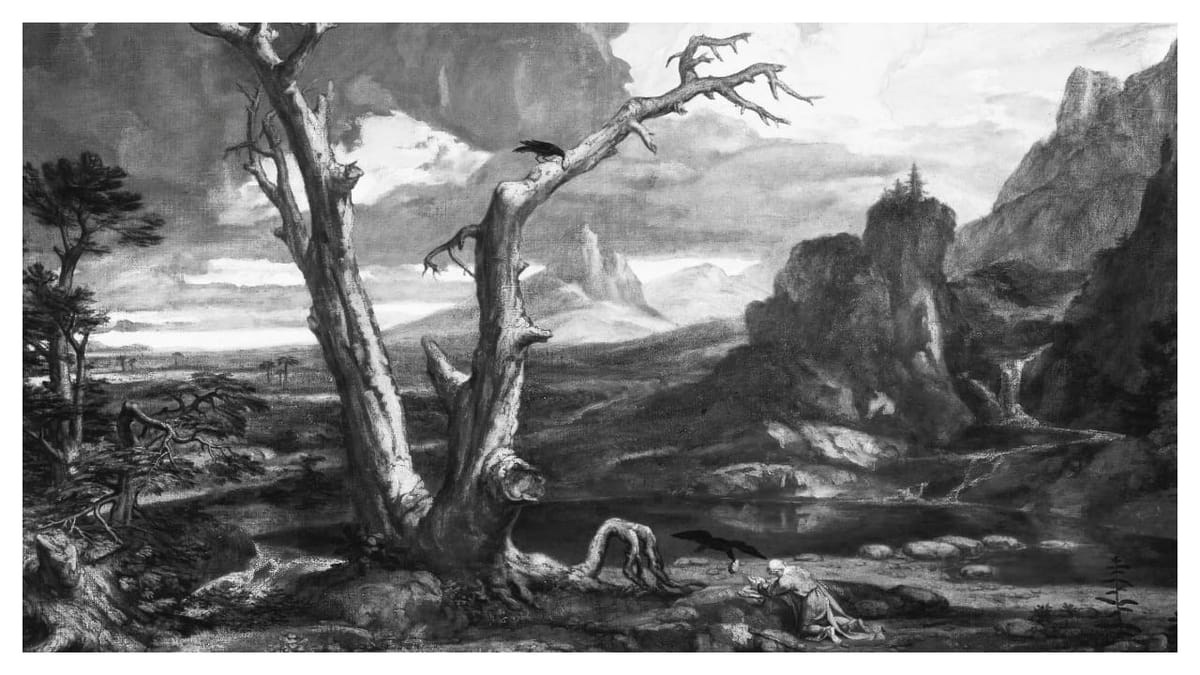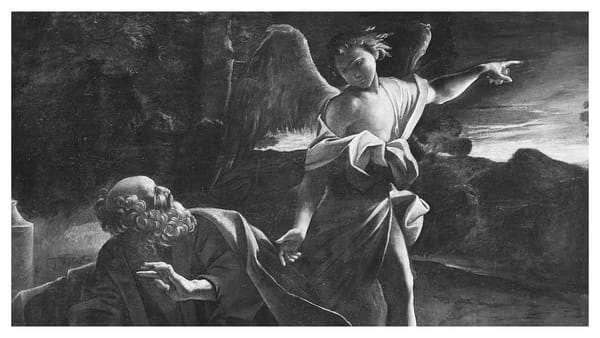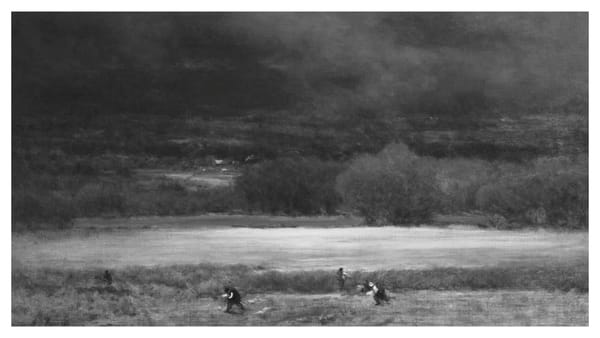The Burnt Offering: Foundation for Divine Glory
A powerful exploration of the burnt offering's relevance today: how following God's ancient pattern of consecration unlocks His manifest glory in modern times.

"And Moses said, This is the thing which the LORD commanded that ye should do: and the glory of the LORD shall appear unto you." - Leviticus 9:6
In the sacred pages of Leviticus, often dismissed as merely historical or ceremonial, lies a profound revelation for our time. The book that served as the priest's handbook, so crucial that Jewish boys from ages six to nine had to memorize it entirely, establishes five distinct offerings. Each was designed to bring God's people to perfection, yet among these, the burnt offering holds particular significance. It stands first, laying the groundwork for all that follows, for it addresses our response to the greatest commandment: "Thou shalt love the Lord thy God with all thy heart, and with all thy soul, and with all thy strength, and with all thy mind."
Consider the weight of Moses' words: "This is the thing which the LORD commanded that ye should do: and the glory of the LORD shall appear unto you." Here lies no mere suggestion but divine command, no simple option but revealed requirement. The burnt offering was not one path among many to experience God's glory - it was the foundation, the divine prerequisite for His manifest presence.
"The burnt offering was not one path among many to experience God's glory—it was the foundation, the divine prerequisite for His manifest presence."
To our modern ears, attuned to instant experiences and quick results, talk of burnt offerings might seem archaic. Our generation, even in spiritual matters, often seeks immediate manifestation without methodical preparation. Yet the principle remains unchangeable: God's glory follows God's pattern. Just as He required specific preparation in the Old Testament, so today He requires particular patterns of consecration before His glory appears.
The Hebrew word for glory - kabod - carries the meaning of weight or substance. It speaks of something tangible, a presence that can be felt. When Isaiah prophesied about our day, saying "Arise, shine; for thy light is come, and the glory of the LORD is risen upon thee," he spoke of a substantial manifestation of God's presence. This same glory that filled Solomon's temple awaits those who follow the pattern of the burnt offering.
Yet here we face a sobering reality: God has a problem with us, and that problem is incompatibility. In our souls, we are not like God, though we are becoming like Him. This incompatibility explains why Moses, desiring to see God's glory, could only endure seeing His "back parts." It explains why God must first deal with His people before manifesting His presence in revival. The burnt offering addresses this incompatibility through a process of progressive consecration and transformation.
Consider how this pattern found its perfect fulfillment in Christ. Just as the Passover lamb required four days of inspection, so Christ underwent examination by four authorities: Herod, Pilate, Caiaphas, and Annas. Each declared they could find no fault in Him. This was no coincidence but divine pattern - the perfect sacrifice thoroughly inspected before offering. We too must undergo inspection before our offering can be presented.
The early holiness movements understood this principle. In the 1900s, the early Salvation Army, Church of the Nazarenes, and Mennonites experienced profound moves of God's sanctifying fire. Unlike our modern instant-gratification approach, they spent weeks, even months, in careful preparation - allowing God to inspect and prepare their hearts. They recognized no shortcut to genuine spiritual authority. Their experience stands in stark contrast to many contemporary revival approaches that seek manifestation without preparation, glory without consecration.
The burnt offering demands specific responses. It requires sacrifice without blemish - our very best offered to God. How different from what God rebuked through Malachi, where people brought the blind, lame, and sick for sacrifice! Today's equivalent might be offering God our leftover time, casual commitment, or divided heart. The offering must be perfect, thoroughly inspected before presentation.
Consider the progression: first comes careful inspection - taking time like those four days of examination to understand what we're offering. Then follows consecration - the deliberate placing of our lives upon the altar. Finally comes sanctification - the divine work of making holy what has been offered. Each stage builds upon the previous, each step crucial in preparing vessels for divine use.
This process must be maintained. The early holiness believers understood that initial consecration, though essential, was just the beginning. They developed daily practices of renewal, regular times of heart examination, ongoing submission to divine inspection. They recognized that authority in God's kingdom flows from sustained consecration.
Yet this process is not merely individual but corporate. The burnt offering pattern prepares not just persons but a people for God's purposes. When Paul wrote to the Ephesian church about losing their first love, he addressed a corporate drift from consecration. Their decline began not with obvious sin but with subtle shifting from whole-hearted sacrifice. The removal of their candlestick - their spiritual authority and power - followed their departure from the burnt offering pattern.
The significance of this truth intensifies in our day. As darkness covers the earth and gross darkness the people, God seeks vessels through which His glory can shine unhindered. The Gentiles must come to His light, the great end-time harvest must be gathered. Yet this harvest requires a church walking in unprecedented authority - authority that comes only through following the pattern of the burnt offering.
Time grows short. The speaker's urgency echoes through his words: "In these next few years we've got to reach the highest in God in our calling." The reason for which God brought each of us into His kingdom must be realized at its highest level. The only way to enter this fullness, to fulfill our divine purpose, lies through the pattern established in Leviticus - the way of the burnt offering.
Let us not stumble where others have fallen. The Ephesian church possessed great gifts, moved in spiritual power, yet lost their place of authority by departing from wholehearted consecration. The pattern remains: God's glory follows God's pattern. No shortcut exists, no alternate path opens before us. The way into His manifest presence, into revival power, into end-time purpose, lies through the burnt offering.
Let us pray:
Sovereign Lord, we bow before Your unchanging pattern. As darkness increases upon the earth, we choose the way of complete consecration. We will not offer You what costs us nothing. Grant us grace to undergo thorough inspection, courage to maintain our consecration, wisdom to follow Your pattern fully.
Deal with our incompatibility, Lord. Transform us through the offering of our lives. Make us vessels fit for Your glory, channels through which Your power can flow unhindered. In these urgent hours, let no area remain unoffered, no part of our lives unsubmitted to Your lordship.
Prepare us, both individually and corporately, as a people ready for Your purposes. Let Your glory appear among us as we follow Your pattern, that through us the nations might come to Your light. In Jesus' name, Amen.
"But we all, with open face beholding as in a glass the glory of the Lord, are changed into the same image from glory to glory, even as by the Spirit of the Lord." - 2 Corinthians 3:18




